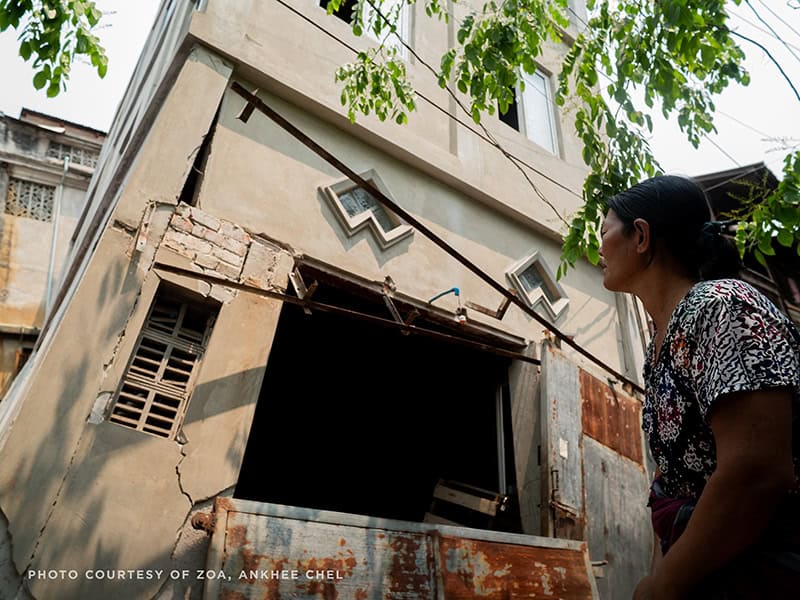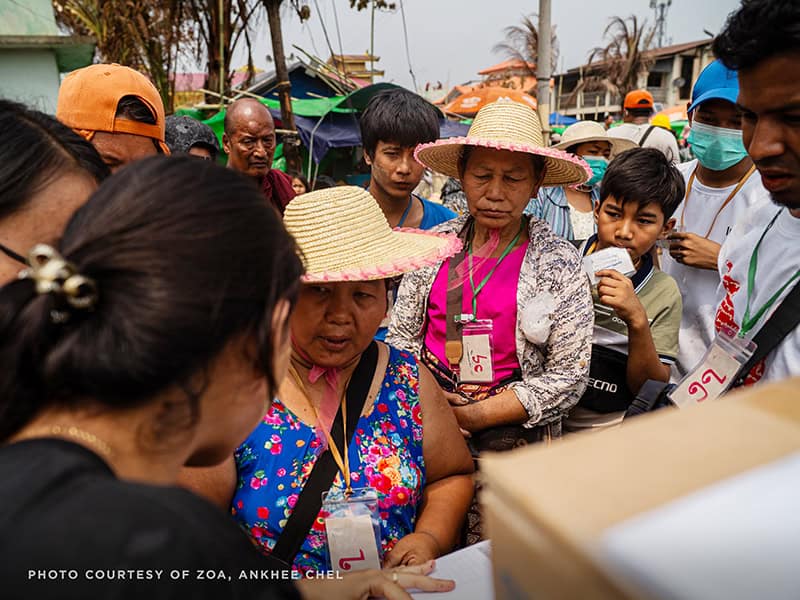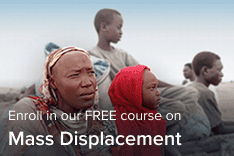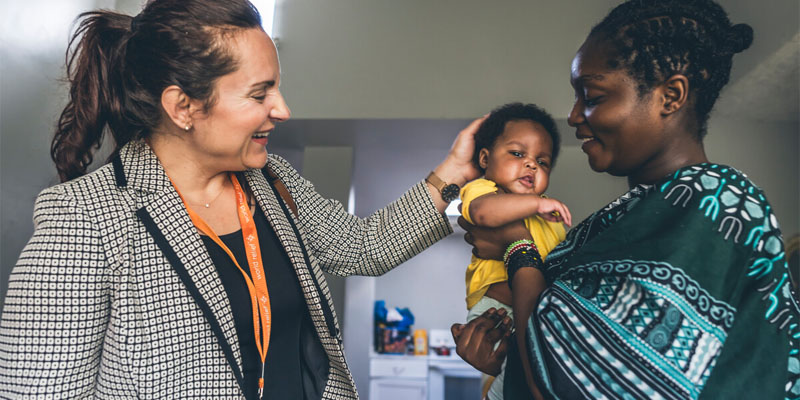Daw Soe Soe experienced the 7.7-magnitude earthquake that struck Myanmar on March 28, 2025. The epicenter was near Mandalay, the country’s second-largest city, where Daw lives with her husband and seven children. “I saw about seventeen people buried under the rubble, and we couldn’t do anything to help them,” she told ZOA, one of the member organizations of Integral Alliance — a global coalition that includes World Relief — currently responding to the crisis.
An estimated 54 million people have been impacted by the earthquake.
The disaster has already claimed over 3,600 lives and injured 5,000. It caused severe damage to airports and internal infrastructure, with hundreds of buildings collapsing across central Myanmar. Tremors were felt as far as Thailand and China and aftershocks of varying intensity have continued, worsening damage and delaying relief efforts.
This disaster struck amid a prolonged civil war that has been ongoing since 2021, making response efforts even more challenging and limiting humanitarian aid. Mandalay, in central Myanmar, hosts over 1.6 million internally displaced persons (IDPs) who had already fled violence. The recent earthquake has uprooted many once again and the devastation has escalated displacement, worsened food shortages and increased the risk of disease outbreaks in a country already in crisis.
For decades, World Relief has walked alongside displaced persons and communities in crisis. This includes supporting Burmese refugees from the nation of Myanmar (also known as Burma), helping them resettle in the U.S. and start a new journey to belonging in an unfamiliar home. Now, we are responding through our trusted partners on the ground in Myanmar — bringing relief and hope amid a complex and devastating situation.
Here are three things you should know about the Myanmar earthquake and how you can help people in need today.
1. How is World Relief responding to the Myanmar earthquake?
With trusted partners from the Integral Alliance network, we are actively assessing needs and providing immediate support to those who have been affected by the earthquake. In hard-hit regions of Myanmar, we are working with a partnering humanitarian organization to provide life-saving assistance in the form of food and non-food items and healthcare support.
Additionally, we are working alongside another trusted organization to provide temporary shelter for 10,000 severely affected people who lost their house and belongings. We are also looking to provide cash assistance to 3,330 households to meet basic needs and organize shelter for their families.
With the support of donors like you, we can continue to partner with on-the-ground organizations to bring aid to people in Myanmar, supporting them in the following ways:
- Household repairs: We are working on urgent house repairs for families with severely damaged houses.
- Collective shelter: We are working to construct a collective shelter that will provide safe living conditions for those without other options.
- Improve access to clean water and sanitation facilities: At the collective shelter, we are working to construct communal toilets, provide access to potable water and provide essential hygiene items.
These partnering organizations on the ground have worked in Myanmar for many years. We are grateful to be able to collaborate and leverage their deep connections to deliver urgent relief efficiently.

2. What are the most urgent needs in Myanmar?
While we celebrate the progress made so far in response to the disaster, we know that there is much more work to be done. The most pressing humanitarian needs already identified include:
- Access to Food and Clean Water: Ongoing conflict and the earthquake have disrupted livelihoods, worsening food security. Limited access to food and clean water will increase risk of malnutrition among children and vulnerable groups.
- Non-food items: Destroyed homes and camps make non-food items vital. Kits with blankets, mosquito nets, hygiene items and shelter supplies are essential.
- Healthcare: The affected need medical attention for health, safety and injury recovery, with referrals for emergency care.
- Protection Support: Vulnerable individuals face heightened exploitation and violence risks. Child protection and gender-based violence prevention services are necessary.
With your support, we can continue providing a holistic and timely response for those who are suffering in Myanmar.

3. How can you help people in Myanmar?
At World Relief, we believe that while we cannot control when disaster strikes, we do have the opportunity to respond to Jesus’s call to step into the crisis with prayer and meaningful action. We believe that God urges us to show compassion and serve as the embodiment of Jesus’s hands and feet bringing relief, healing and hope.
We’re honored to be able to link arms with partners like you to provide tangible support and restore hope to those facing extreme and unexpected vulnerabilities in Myanmar. Your generosity will provide much-needed relief to families reeling from this devastation.
- $50 can provide an injured person with a mobile clinic consultation.
- $120 can provide a household with an essential items kit, including tarp, mosquito nets, insecticides, a solar light and more.
- $200 can provide food packages for 5 families.
Will you join us in meaningful action by financially supporting our response efforts in Myanmar?

Samuel Heard serves as a content specialist at World Relief. His writing has appeared in a variety of outlets, including Baptist Press, Mere Orthodoxy, the Center for Faith and Culture and elsewhere. He lives in Upstate South Carolina with his wife and two children.


